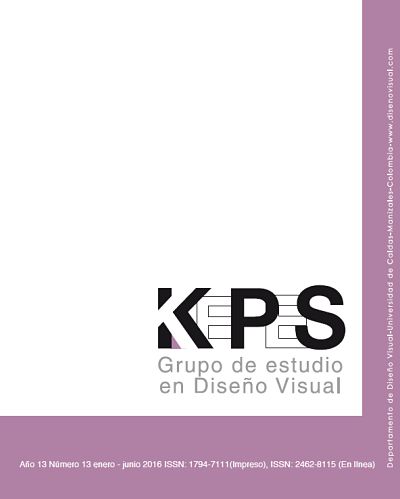Authors
Abstract
Mobile First is not just a concept resulting from marketing since even UNESCO invites to explore the educational possibilities of the mobile phone inside and outside the classroom. Mobile Internet, internet of things, geolocation and mobile sensors configure a new convergence of media characterized by the mobility of people and machines. This mobility, besides making possible interactivities (relations with technological intermediation) characteristic of static systems, generates analogue relationships because of interactions (physical and personal relationships) with the user, with others and within the space-time binomial. This mobility is also the protagonist in the processes of transmedia design and creation. Designers, creators and content and software developers have to think first of this device (Mobile First) and have to consider if its creations fit other screens (“Responsive Web Design). The hypothesis is that mobile hypermedia is emerging as a new media that is usually the main protagonist in transmedia creation. This raises a taxonomic, narrative, creative and ludic-educative-communicative approach that tries to demonstrate it. Hypermedia mobile communication possibilities are analyzed and their roles in transmedia communication. Prospective is used to point out the shortcomings of the moment and to make a note of future possibilities that are born from unmet needs. Marketing is responsible for enhancing the technological glare. A rigorous look from the academy focused on design, contents and accessibility is required so that it helps to go from a dazzling technology to a technology that enlightens knowledge.
Keywords
References
________. (2013). Integración de GIS (sistemas de georreferenciación de la información) y localización espacial en prácticas pedagógicas y lúdicas vinculadas a museos. Arte, individuo y sociedad, v. (25), 121-134 (http://goo.gl/h74QeI).
Beranuy, C. et al. (2009). Validación de dos escalas breves para evaluar la adicción a Internet y el abuso de móvil. Psicothema,v. 21, núm. 3, 480-485 (http://goo.gl/JKf4HT).
Bush, V. (1945). “As We May Think”. The Atlantic, July 1, 1-8. (http://goo.gl/CkfceA).
Butlewski, M. et al. (2014). Heuristics in Ergonomic Design of Portable Control Devices for the Elderley. En: Stephanidis, C. y Antona, M. (Eds). Universal Access in Human-Computer Interaction: Aging an Assistive Environment. Heidelberg: Springer.
Calvi, J. (2010). La reconfiguración del campo cultural. Lógicas sociales de creación y circulación del audiovisual en Internet. Telos, 85, 45-52. (http://goo.gl/RP7jcr).
Cangiano, S. y Fornari, D. (2014). Products as platforms: a framework for designing open source interactive artifacts. En: Proceedings of the 2014 Companion Publication on Designing interactive systems (DIS Companion ‘14),219-222. (http://goo.gl/CgxmgX)
Davenport, G. (2015). Interactive cinema. MIT Medialab (http://goo.gl/0HkSqt).
Ditrendia (2015) (http://goo.gl/BD8Zun) .
Epstein, M. (2016). Walking cinema. En: Museum I+D+C (2016). Glosario Social Expandido (https://goo.gl/rsQ0Ks).
Gómez Alzate, A. (2015). Modelo de Diseño para la valoración y apropiación social del Patrimonio en el Paisaje Cultural Cafetero Colombiano. Kepes, año 11, núm. 11 enero-junio, 117-138. DOI: 10.17151/kepes.
Grassi, A., Gagglioli, A. y Riva, G. (2009). The green valley: the use of mobile narratives for reducing stress in commuters. Cyberspsychology. Behavior and Social Networking, April, num. 12, v. 2, 155-161. (http://goo.gl/j6GNvA).
Hudson-Smith, A. et. al. (2012). Experiments with the internet of things in museum space: QRator. En: Proceedings of the 2012 ACM Conference on Ubiquitous Computing (UbiComp ‘12),1183-1184. (http://goo.gl/MZzzyK).
Lizuka, T. (2007). An Empirical Analysis of Planned Obsolescense. Journal of Exonomics & Management Strategy, January, v. 16, num. 1, 191-226. (http://goo.gl/PzFBAH).
Ladly, M.; Ludlow, B. y Buzio, G. (2014). People, places and things: a mobile locative mapping workshops. En: Proceedings of the 16th international conference on Human-computer interaction with mobile devices & services (MobileHCI ‘14),569-572 (http://goo.gl/3ea7Mq).
Landow, G. P. (2006). Hypertext 3.0. Critical Theory and New Media in an Era of Globalization. Maryland, USA: The Johns Hopkins University Press.
Lemos, A. (2010). “Post-Mass Media Functions, Locative Media, and Informational Territories: New Ways of Thinking About Territory, Place, and Mobility in Contemporary Society”. Space and Culture, November, v. 13, núm. 4, 403-420. (http://goo.gl/3ea7Mq).
Logan, R. K. (2010). Understanding New Media: Extending Marshall McLuhan. New York: Peter Lang Publishing.
Moreno Sánchez, I. (2015). Interactividad, interacción y accesibilidad en el museo transmedia. Zer, Vol. 20, núm. 38, 87-107. (http://goo.gl/yVAsUA).
Moreno Sánchez, I. y Navarro Newball, A. A. (2015). La ciudad escondida. Toledo, laboratorio de comunicación transmedia. Opción, año 31, núm. 1, 806-827 (http://goo.gl/ayOPZB).
Moreno Sánchez, I y Navarro Newball, A. A. (2013). Comunicación cultural y TIC: La representación accesible de la cultura Chimú. Historia y Comunicación Social. Vol. 18, octubre, pp. 541-554. DOI: http://dx.doi.org/10.5209/rev_HICS.2013.v18.43987
Nagler, S.; Hicks, A. et. al. (2014). Narratives: geolocative cinema application. En: Proceedings of the 16th international conference on Human-computer interaction with mobile devices & services (MobileHCI ‘14), 593-595. (http://goo.gl/JF92LD).
Perea Tanaka, C. Moreno Sánchez, I. et. al. (2015). Towards tantalluc: interactive mobile augmented reality application for the Museo de América de Madrid. Computing Colombia Conference, IEEE Xplore (http://goo.gl/K8fVVi).
Rico, J. (2010). Usable Gestures for Mobile Interfaces: Evaluating Social Acceptability. En: CHI´10 Proceedings of the SIGCHI Conference on Human Factors in Computing Systems, 887-896(http://goo.gl/Arh3iz).
Rifkin, J. (2014). The Zero Marginal Cost Society: The Internet of Things, the Collaborative Commons, and the Eclipse of Capitalism. New York: Palgrave Macmillan.
Santoso, M. y Gook, L. B. (2012). ARobot: development of 3rd person shooting game and handheld augmented reality. En: Proceedings of the 11th ACM SIGGRAPH International Conference on Virtual-Reality Continuum and its Applications in Industry (VRCAI ‘12),55-58. (http://goo.gl/Kw6pFR) (23-02-2016).
Schmandt, C. (2016). Living Mobile (http://goo.gl/tHt5pC).
Siapera, E. (2012). Undestanding New Media. Londres: SAGE.
Townsend, A. (2006). Locative-media Artists in the Contested-Aware City”. Leonardo, v. 39, num. 4, 345-347(http://goo.gl/3ZwOSk).
Tuters, M. y Varnelis, K. (2006). Beyond Locative Media: Giving Shape to the Internet Thing. Leonardo, August, v. 39, núm. 4, 357-363.

 pdf (Español (España))
pdf (Español (España))
 FLIP
FLIP





















